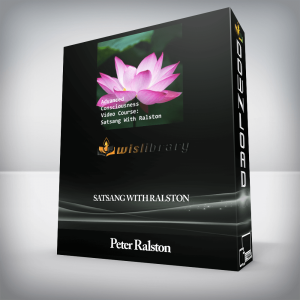In this new, comprehensive certificate training, you’ll see how neuroscience can inform why, how and what techniques can help your clients stop the symptoms of anxiety — even the tough to treat panic attacks, worry, rumination, nausea, and pounding hearts.Purchase Certified Clinical Anxiety Treatment Professional (CCATP) Training Course: Applied Neuroscience for Treating Anxiety, Panic, and Worry – Catherine M. Pittman courses at here with PRICE $399.99 $125Advances in neuroscience have provided a roadmap for the brain that shows us the key to working with anxious minds. But knowing how to interpret the complex map neuroscience provides has left many clinicians wondering… How do I unlock the complicated inner workings of the brain to guide my client sessions?In this new, comprehensive certificate training, you’ll see how neuroscience can inform why, how and what techniques can help your clients stop the symptoms of anxiety — even the tough to treat panic attacks, worry, rumination, nausea, and pounding hearts.Now you can join Catherine Pittman, Ph.D., HSPP, for a comprehensive step by step clinical training on how you can revolutionize your anxiety treatment approach with the power of neuroplasticity.More than just the neurobiological “whats and whys,” you’ll also learn the “hows” of actual treatment — so you’ll know exactly how to empower your clients with strategies to resist anxiety-igniting cognitions.You’ll end this course with your Certificate in Applied Neuroscience for Treating Anxiety, Panic and Worry and be fully prepared to integrate brain-based strategies that motivate lasting change for calming the mind — even in your most anxious, worried, traumatized, or obsessive clients.Bonus! Now you can become a Certified Clinical Anxiety Treatment Professional. Complete this online certificate course to fulfill the educational requirements you need to advance your career. Learn more below…Today’s advances in neuroscience have provided us with more evidence-based explanations about the causes and treatment of anxiety-based disorders than any other clinical disorder you’ll see in your practice.Through 10 comprehensive modules, you’ll learn through easy-to-understand language how you can apply neuroscience to your anxiety treatment plans to effectively and easily modify the processes in the brain that give rise to anxiety — so you can help your clients find deep, lasting relief from panic, worry, trauma, and obsessions.Module 1:Using Neuroscience in the Treatment of AnxietyHow does Neuroscience inform the clinical treatment of anxiety? In Module one, you will explore the neurological processes behind anxiety. You’ll also learn…How you can help your anxious clients understand their own symptoms, feelings, interpretations, beliefsWhat to do when treatment strategies for anxiety produce anxietyHow to work within the goal of changing the brain rather than the goal of reducing anxietyHow neuroplasticity makes the brain more resistant to anxietySimple explanations you can share clients about how anxiety travels through their brainModule 2:Working with the AmygdalaModule 2, you’ll learn how the amygdala fuels anxiety and how amygdala management can improve your client’s level of functioning without the use of medication.Why amygdala management is essential for all Anxiety Disorders, PTSD, OCD, DepressionThe amygdala’s role in the stress/fear/anxiety response and formation of emotional memoriesHow to train the brain to stop responding to negative anxiety “triggers”The Vagus nerve’s role in recovery from the activation of the sympathetic nervous systemInterventions that reduce anxiety “fuel” produced in the amygdalaUsing exposure: safely activating the fear circuitry created in the amygdala to generate new connectionsModule 3:Managing the CortexThe brain’s cortex plays an “anxiety igniting” role in many anxiety disorders, including: GAD, SAD, OCD, PTSD and also depression, eating disorders and substance abuse. In Module 3, you’ll learn tools and strategies for recognizing and managing anxiety driven by the cortex. You’ll also learn…How the cortex constructs realityHow to resist the effects of anticipation and the healthy (adaptive) use of worry“Survival of the busiest” principle — strengthen or weaken specific circuitryHow to recognize and modify the impact of uncertaintyLeft hemisphere techniques: How to use cognitive defusion, coping thoughts, and fighting anticipationRight hemisphere techniques: How to use imagery and musicModule 4:Medications in the Treatment of AnxietyEven when you don’t prescribe medications, it’s important to understand how medication impacts your treatment plan. In this module, you’ll learn how your partnership with prescribers can improve overall client education on how medication affects clients and their therapeutic goals.The myth of the chemical imbalanceTools for assessing medication use during the initial intakeHow SSRIs and SNRIs promote neuroplasticityThe danger of sedating the brain with benzodiazepinesAnd overview of buspirone, beta blockers and sedatives/hypnotics/z-drugsThe effectiveness of CBT and medsModule 5:Exposure Strategies for Teaching the AmygdalaUsing exposure can help teach the brain new, positive ways to respond. In this module, you’ll learn to safely and effectively use exposure strategies to create new emotional learning.Tools for helping clients learn to reduce avoidance and push through anxietyHow to prepare clients for exposure: psychoeducation, breathing training, cognitive restructuringIn vivo vs. imaginal exposure approachesInteroceptive triggers and methods for exposureUse of Subjective Units of Distress/Discomfort Scale (SUDS)Concerns associated with safety signals, medications, distractionHow to troubleshoot problemsModule 6:Mindfulness in the Anxious BrainOur clients with anxiety or depression may be so tuned into worry or rumination that they aren’t aware of their experiences. When we introduce Mindfulness to the anxious brain, we provide an evidence-based avenue for changing the brain to be more resistant to anxiety and its symptoms.Defining basic emotional reactions: Attachment, Aversion, IndifferenceHow to practice self-acceptance and erase the detrimental effect of judgmentUsing mindfulness to explore thoughts, sensations, and emotional reactionsHow to use the power of intention to focus thoughts in new directionsTools for coping with common reactions to aversionModule 7:Using Neuropsychologically Informed CBT InterventionsIn this module, you’ll work on increasing the effectiveness of CBT tools by using neurologically informed interventions. You’ll learn exactly what to do to use this skills-based approach to help your clients practice new behaviors and strengthen new neural connections to ease their anxiety.Using CBT and neurological knowledge to strengthen client engagementAdvantages of the strategic use of neuroscience in CBTWhy focusing on logic and disputing has limitsUsing skills-based approaches in CBT to provide the brain experiences to learnModule 8:Treating Comorbid DepressionWith some estimates showing that 60% of those with anxiety will also have symptoms depression, you are likely treating individuals for both disorders. In this module, you’ll explore the link between anxiety and depression and learn how you can more effectively improve both disorders through interventions that help make the brain more resistant to anxiety and depression.How the hippocampus impacts negative thinkingExercises to help clients focus on the positiveAddressing worry, rumination, and common cognitive errors in depressionBenefits of goal setting and behavioral activationKey role of social support and social interactionModule 9:Cognitive Restructuring InterventionsWhen clients have obsessive, ruminative and worry-based thinking, clinicians can easily get caught up in the process. In module 9, we’ll cover effective approaches for working with OCD and GAD that ensure we don’t co-obsess.How to challenge distorted thoughts and unrealistic beliefs and imagesHow to identify and stop anxiety-igniting thoughts common in OCD and GADStrategies for helping clients embrace uncertaintyMaking OCD or worry the adversary: Don’t be bullied!Why clients should schedule obsessions or worries to bring them under controlModule 10:Using Reconsolidation ApproachesBreakthrough research shows we can modify and erase old memories through reactivation – which can reduce anxiety symptoms quickly. In this final module, you’ll explore step-by-step how to safely use therapeutic memory reconsolidation to improve anxiety treatment.Explaining implicit emotional learning and identifying examplesHow to assist the client to experience the memory structure in the present momentHow to promote your client’s experiential learning of emotional truthSteps for disconfirming the emotional memory with “mismatching” information that invalidates itAre you ready to step into the life awaiting you as a Certified Clinical Anxiety Treatment Professional?Get Certified and Go Further… Become a Certified Clinical Anxiety Treatment Professional and show your employer, clients, potential clients and fellow professionals your commitment to honing your skills and staying up to date on anxiety treatment best-practices.Professional Reputation and CredibilityDistinguish yourself from your peers and increase your opportunities for career advancement, earning potential, and client growth. Certification is a personal accomplishment and unbiased barometer of your skills.Client TrustProvide assurance to consumer and clients when you display your certification. When you complete your certification, they can be confident you are providing them with the best tools and strategies for improving clinical outcomes.Tag: “Certified Clinical Anxiety Treatment Professional (CCATP) Training Course: Applied Neuroscience for Treating Anxiety, Panic, and Worry – Catherine M. Pittman” Review. “Certified Clinical Anxiety Treatment Professional (CCATP) Training Course: Applied Neuroscience for Treating Anxiety, Panic, and Worry – Catherine M. Pittman” download. “Certified Clinical Anxiety Treatment Professional (CCATP) Training Course: Applied Neuroscience for Treating Anxiety, Panic, and Worry – Catherine M. Pittman” discount. Purchase Certified Clinical Anxiety Treatment Professional (CCATP) Training Course: Applied Neuroscience for Treating Anxiety, Panic, and Worry – Catherine M. Pittman courses at here with PRICE $399.99 $125

 Certificate Course in Wound Care: Intensive 3-Day Boot Camp with Hands-on Simulation – Kim Saunders
₹20,750.00
Certificate Course in Wound Care: Intensive 3-Day Boot Camp with Hands-on Simulation – Kim Saunders
₹20,750.00
 Healing Cultural Trauma with Internal Family Systems (IFS) – Frank Anderson
₹26,892.00
Healing Cultural Trauma with Internal Family Systems (IFS) – Frank Anderson
₹26,892.00
Certified Clinical Anxiety Treatment Professional (CCATP) Training Course: Applied Neuroscience for Treating Anxiety, Panic, and Worry – Catherine M. Pittman
₹20,750.00




